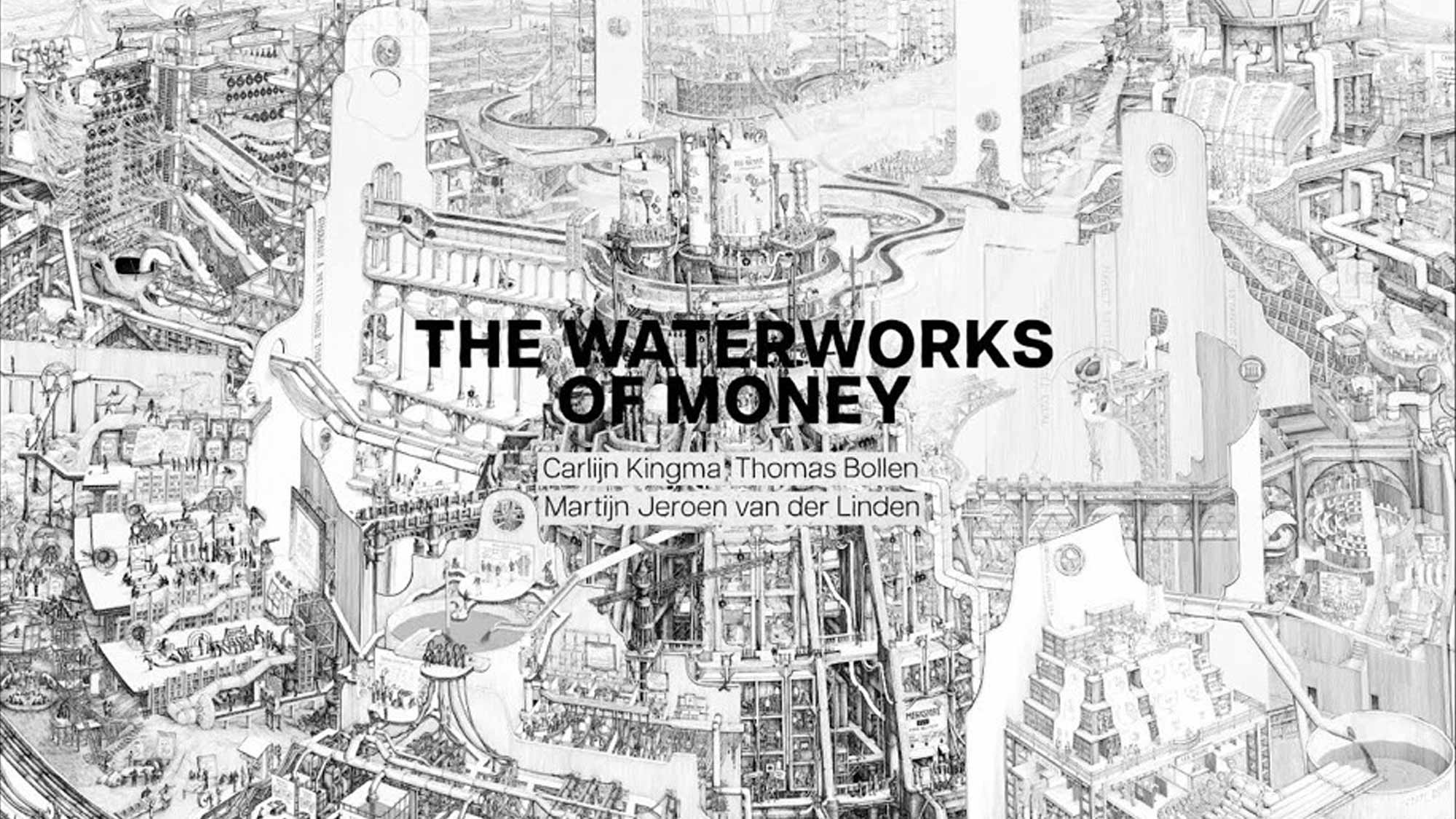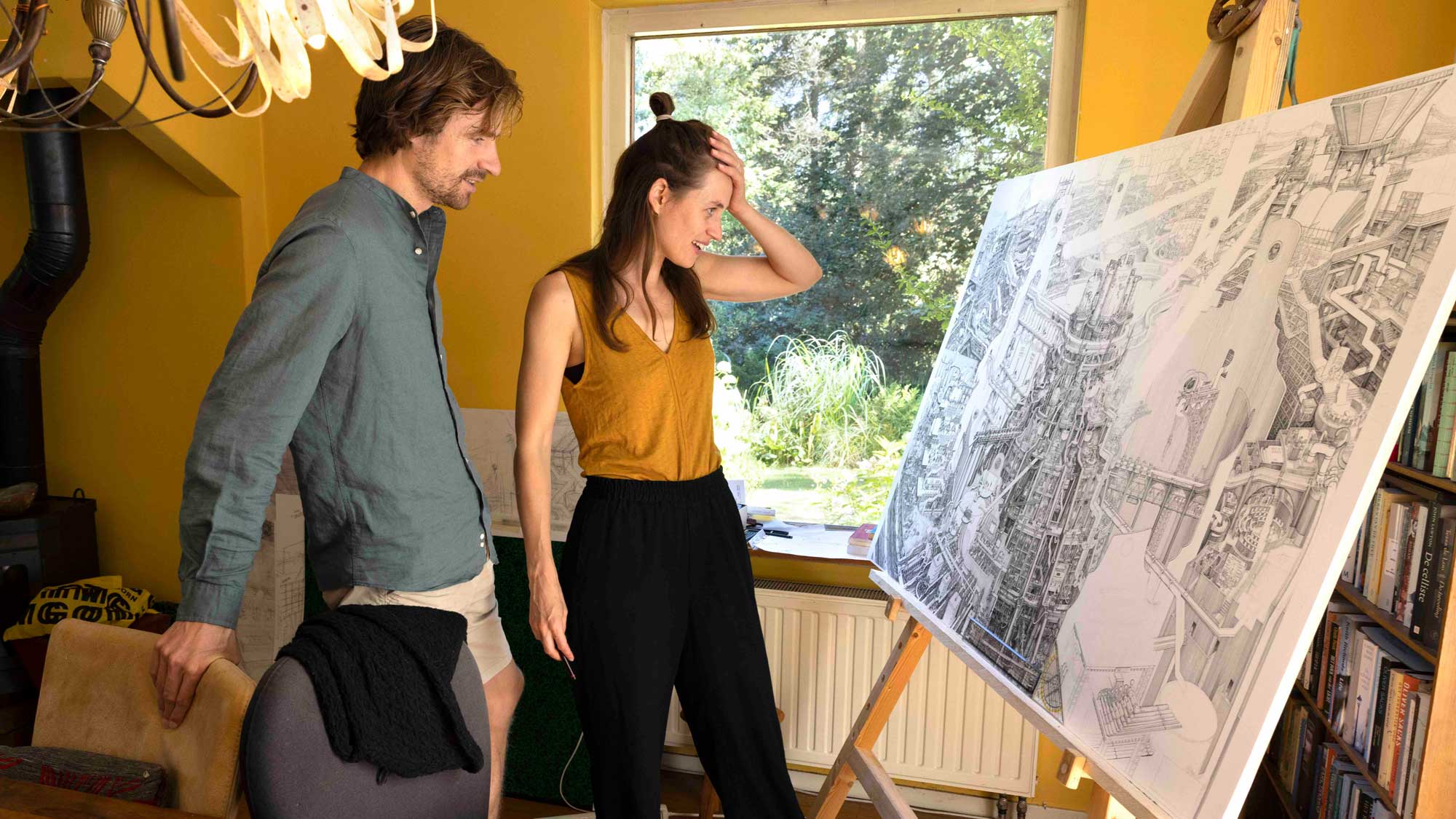Honorary Mention
Although money plays a key role in our lives, the workings of our monetary and financial system are a mystery to most of us. The Waterworks of Money demystifies the world of big finance by visualizing the flow of money through our society. It explores several options for improvement using new technologies—with the ultimate goal of designing the best money system possible for the digital age.
The project is a collaboration of cartographer Carlijn Kingma, investigative journalist Thomas Bollen and professor of New Finance Martijn van der Linden. Kingma spent 2,300 hours drawing a map of the money system, based on in-depth research, partnerships with financial institutions, and interviews with more than 100 experts: executives and employees of (central) banks and pension funds, and asset managers, politicians, academics and monetary activists.
Our society is facing a serious challenge. Inequality is growing and many European countries are dealing with a cost of living crisis while financial instability remains an ongoing threat. We are also running out of time to make the European economy more sustainable. These problems cannot be seen in isolation from the architecture of our money system. If we truly want to tackle them, we will have to address the design flaws in our current money system.
Now is the time to do so. The digitalization of our economy has created new opportunities to redesign our money system. For example, the EU is working on the introduction of a Central Bank Digital Currency. This digital euro could open up new possibilities to improve our financial architecture.
Designing the money system—and the laws and institutions that govern it—is ultimately a democratic task. In practice, however, there is a major obstacle impeding the democratic process: financial illiteracy. By making the world of money understandable, we help citizens to develop their own vocabulary to participate in the debate about the future of our money.
Credits
Drawings: Carlijn Kingma
Stories: Thomas Bollen, Carlijn Kingma, and Martijn Jeroen van der Linden
Animations: Studio Tiepes
English translation: Erica Moore
Audio recordings: Studio Oorbit
Photos: Studio Oppa
With support from: The Hague University and investigative journalism platform Follow The Money; Stimuleringsfonds Creatieve Industrie, Stichting Brave New Works, and the Interledger Foundation. The project received support from the Rabobank through an artist-in-residence.
Biography
Carlijn Kingma (NL) is a cartographer of society, mapping invisible power structures with researchers, experts, and journalists. Her work, honored with the New Babylon Award in 2017, has been displayed in the Kunstmuseum Den Haag. In 2018, she won the Architecture Drawing Prize for hand-drawing and exhibited at Sir John Soane’s Museum in London alongside Piranesi and Joseph Gandy. Kingma’s work has also been shown at the Rijksmuseum Twenthe, Museum Flehite, and Lowlands Festival. In 2021, she won the Dutch Talent of the Year and the Henning Larson Competition. Her recent projects, The Waterworks of Money and Follow the Money, were exhibited at the Kunstmuseum The Hague and the Venice Biennial in 2023. In 2024, her work will be showcased at the Boijmans Depot and BRUTUS. The project received the Master Storyteller Award, the Amsterdam Art Prize, and the Dutch Design Awards.
Jury Statement
Although money plays a key role in everyone’s lives, the inner workings of the monetary and financial system are a mystery to most. The Waterworks of Money visualizes the flow of money through society through metaphors, maps, and animations, and explores options for improving the money system in the digital age. Today, Europe is facing the challenge of inequality. Many Europeans are dealing with a cost of living crisis while financial instability remains an ongoing threat. At the same time, the European economy needs to become more sustainable and resilient. Meanwhile, the digitalization of our economy has created new opportunities to redesign the current money system. These challenges can, however, not be seen in isolation from the architecture of the monetary system. Designing this system—and the laws and institutions that govern it—is ultimately a democratic task. In practice, however, there is a major obstacle impeding the democratic process: financial illiteracy. By making the world of money understandable, The Waterworks of Money assists citizens in developing their own vocabulary to participate in the debate about the future of money.






